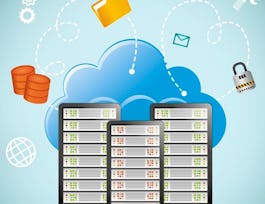This course provides a comprehensive overview of data, various data types, design of databases for storage of data, and creation and manipulation of data in databases using SQL. By the end of this course, students will be able to describe what business intelligence is and how it’s different from business analytics and data science, conduct a basic descriptive statistical analysis and articulate the findings, and differentiate between types of statistics. They will also be able to define normalization and ETL, create an ERD that shows progression from conceptual to logical to physical design, define DDL, DML, DCL, and TCL, and write SQL scripts to create a database and associated tables.



The Nature of Data and Relational Database Design
This course is part of Database Design and Operational Business Intelligence Specialization

Instructor: Tim Carrington
Sponsored by EdgePoint Software
5,470 already enrolled
(98 reviews)
Recommended experience
What you'll learn
Create an ERD that shows progression from conceptual to logical to physical design
Conduct a basic descriptive statistical analysis and articulate the findings
Write SQL scripts to create a database and associated tables
Skills you'll gain
Details to know

Add to your LinkedIn profile
4 assignments
See how employees at top companies are mastering in-demand skills

Build your subject-matter expertise
- Learn new concepts from industry experts
- Gain a foundational understanding of a subject or tool
- Develop job-relevant skills with hands-on projects
- Earn a shareable career certificate


Earn a career certificate
Add this credential to your LinkedIn profile, resume, or CV
Share it on social media and in your performance review

There are 4 modules in this course
Welcome to Module 1: Overview of Business Intelligence! In our first module, we will define business intelligence and differentiate it from business analytics and data science. We will also overview decision support systems and practice working with them through our activity. Finally, we will differentiate between OTLP and OLAP as well as identify the goals of business intelligence through a short quiz.
What's included
7 readings1 assignment1 discussion prompt
Welcome to Module 2: Nature of Data & Descriptive Statistics. In this module, we will dive into the types of data, the process of data preparation and descriptive and inferential statistics. We will differentiate between descriptive and inferential statistics as well as structured and unstructured data with a short quiz. Finally, we will use Microsoft Excel Data Analysis Toolpak to conduct a basic descriptive statistical analysis and share our findings.
What's included
1 video4 readings1 assignment1 discussion prompt
Welcome to Module 3: Relational Database Design (ERD and Normalization). In this module, we will define relational databases and overview the process of designing databases. We will differentiate between conceptual, logical and physical design with a short quiz. In addition, we will create an ERD that shows progression from conceptual to logical to physical design through our activity.
What's included
4 readings1 assignment1 discussion prompt
Welcome Module 4: Structured Query Language (SQL) Overview. In our final module, we will overview SQL as well as define Data Definition Language (DDL) and Data Manipulation Language (DML). Through a short quiz, we will define DDL, DML, DCL, and TCL, as well as differentiate between varying MySQL keywords and data types. In our final activity, we will write SQL scripts to create a database and some associated tables. We will then extract and articulate useful information from the data that we can share with fellow students.
What's included
1 video1 reading1 assignment1 discussion prompt
Instructor

Offered by
Why people choose Coursera for their career




Learner reviews
98 reviews
- 5 stars
72.72%
- 4 stars
14.14%
- 3 stars
6.06%
- 2 stars
4.04%
- 1 star
3.03%
Showing 3 of 98
Reviewed on Feb 11, 2022
The topics are very interesting and I really want to use the things that I have learned from here.
Reviewed on Mar 26, 2023
It is a great course for a non-tech person. I would recommend this course to people want to advance their skills and change careers into Data
Reviewed on Apr 30, 2023
A very insightful course. It requires some short background in statistics (using Excel spreadsheet) but it is one of the best introductory courses in Business Intelligence and Relational Databases.
Recommended if you're interested in Information Technology

Johns Hopkins University

Johns Hopkins University

University of Michigan

Open new doors with Coursera Plus
Unlimited access to 10,000+ world-class courses, hands-on projects, and job-ready certificate programs - all included in your subscription
Advance your career with an online degree
Earn a degree from world-class universities - 100% online
Join over 3,400 global companies that choose Coursera for Business
Upskill your employees to excel in the digital economy



